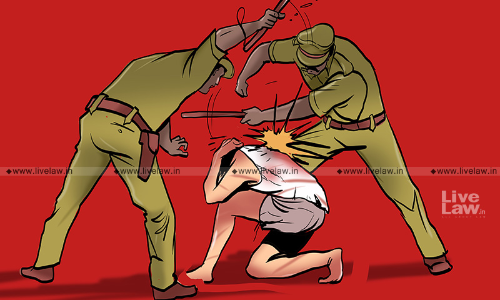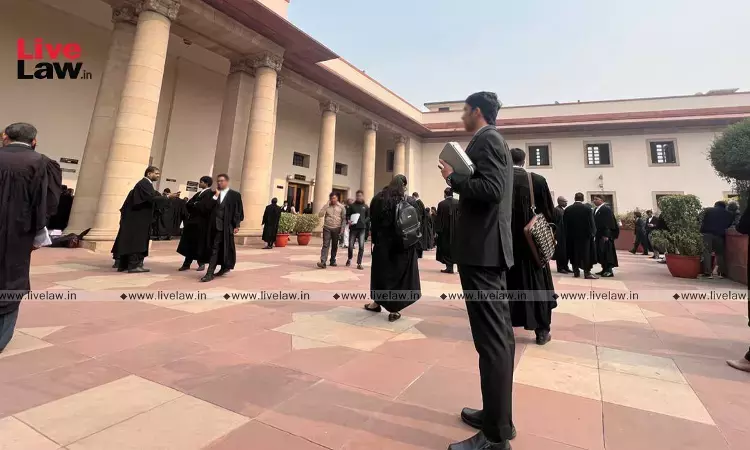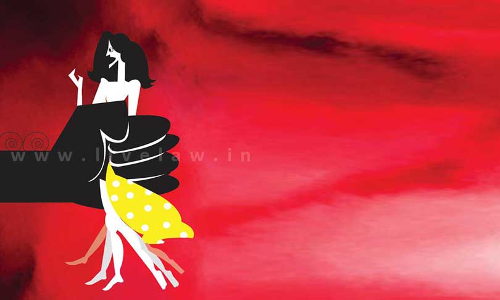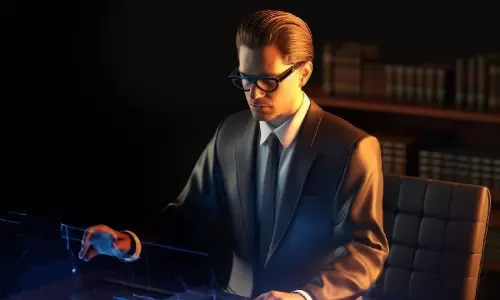Sampling the Supreme Court, I recently wrote on how the bench and bar are inseparable. Sharing an unfortunate incident of altercation between the bar and bench, I made an attempt to highlight a growing concern of steep rise in heated exchanges between members of the bar and bench. I closed my submission writing that a spade needs to be called a spade, be it a lawyer or the bench.The current...
Sampling the Supreme Court, I recently wrote on how the bench and bar are inseparable. Sharing an unfortunate incident of altercation between the bar and bench, I made an attempt to highlight a growing concern of steep rise in heated exchanges between members of the bar and bench. I closed my submission writing that a spade needs to be called a spade, be it a lawyer or the bench.
The current piece borrows inspiration from a recent incident where a notable Advocate-on-Record traced it to the Chief Justice Dipak Misra in an open court and shared a genuine concern that senior advocates are getting comparatively more audience and they do multiple mentionings while juniors are not treated at par. The AOR also shared that it was not the tradition of the court that senior advocates come and mention. The Ld. CJI initially, instead of addressing the concern, shrugged him off by asking not to preach. However, as a welcome afterthought, the incident bore positive fruits as now the CJI announced that henceforth only AORs will be permitted to mention matters for urgent listing and not seniors. I strongly welcome this step which will give more exposure to juniors at bar. I also seek liberty to congratulate the courageous AOR who brought it to the notice of the Chief Justice.
The Supreme Court bar can be classified into 3 major parts – Senior Advocates, Advocate-on-Records and Advocates. Senior advocates comprise of advocates designated by the Supreme Court, advocates designated by other high courts and retired judges of the high courts designated by the Supreme Court. AORs carry a requisite qualification, contest an exam and earn the respectable title of an AOR. All filing is done through AORs. Rest advocates are mostly juniors at bar and the ‘senior yet junior’ counsel who do not wish to become AORs. The juniors range from those recently enrolled to those with vast experience but still learning. It is not arcane knowledge that the dropout rate from the profession is very high and a large section of the recently enrolled ones tends to look for other jobs eventually. Reasons for this may be listed as less remuneration, financial insecurity etc. A major reason, and arguably the most effecting one, is the ‘unequal treatment’ they witness at bar, especially what flows from the bench. It cannot be denied that they are at a nascent stage of their career and should not form an opinion without testing it gradually. But it can also not be denied that there is concentration of the substantial chunk of the case work in few noble hands. Those who struggle like crows in fog gradually succeed and are filtered to reach the next level after a span of 4-5 years. It is now when they choose to fly solo, go independent and take up their own matters. By this time, most of them kickstart their families as well. It is a difficult world to survive. There is cut-throat competition at every level. They realize this and continue their struggle. But, alas, what still hampers them the most is the ‘unequal treatment’ again. They are now a part of the bigger fight in the midst of senior advocates. A lot of benches do not take juniors ‘seriously’. Many clients insist on engaging seniors. There are time constraints and seniors are readily accommodated by the bench for adjournments or mentionings. All these factors affect the practice in an undeclared manner, but alas, no reason to complain.
In the light of my experience at bar, I wish to share a few unwritten-undeclared practices at the Supreme Court.
- The face value theorem – ‘Yaar iske saamne uska chalta hai’. Perhaps the most underrated, but the most used and arguably the most effective sentence for a counsel. We do this. I do this. When a particular judge comes from a particular high court or a state, advocates tend to brief senior advocates who practiced together with the judge or know them personally. As incorrect as it may sound, this practice works sometime. I urge the bar to curb this to uplift equality, if possible.
- Judgocratic victimization – Seniors are heard more and are granted more relief. This is accepted at bar. A statistical and figurative analysis by think-tank Vidhi Legal and notable academicians Mark Galanter and Nick Robinson proves this. I ask myself this question – Is this correct? Is this not victimization that a litigant cannot afford a senior’s fees. However, instead of raising and debating this issue, the bar tends to use it otherwise and engage seniors.
- The pre-audience phenomenon – The Constitution and the Advocates Act coupled with the Bar Council of India Rules give a right of audience to the Attorney-General over all other advocates. Section 23 of the Advocates Act, 1961, gives a hierarchy of pre-audience amongst advocates. Sadly, as impressive as it may sound theoretically, it is not so practically and goes against equality completely. The Supreme Court has reserved judgments in two extremely important questions of law – first, challenge to the constitutional validity of Section 16 of the Advocates Act, 1961, and whether there should be express rules for conferring the title of a ‘senior advocate’. Second, whether the Meghalaya High Court rules that permit an advocate practicing elsewhere other than that high court to be declared as a senior advocate are valid. Let us wait for the decisions. Nevertheless, this goes against equality equally.
- The dynasty syndrome – There was a recent furore against dynastical political rule in a democracy like ours. Such ruling dynasties exist in the legal profession as well. Generations after generations, people born with legal silver spoons are at an advantage over others, irrespective of the talent they carry. I have known people with exceptional talent suffering only because they were not born in a legal dynasty. I have also seen people doing exceptionally well only because they were born in a dynasty. I do not deny that people without a dynasty do good and people even with a dynasty behind them are not able to maintain the tradition, but nevertheless this is a harsh reality.
- The fees – Seniors charge hefty fees. Not every litigant can afford to pay six or seven figures per hearing. A lot of seniors accept and conduct matters pro bono but in my experience, a lot of such cases are handled only by their juniors gradually. It has become a fashion or rather a trend to show off that a particular senior advocate handles so many pro bono cases. It either is to serve political purposes or some other ulterior motives at times. However, I must mention we have few seniors at bar who are dedicated to social issues and fight emphatically for the downtrodden. Without charging, of course.
- No written engagement – Another issue is that there is no written engagement with a senior advocate. I have seen seniors going before the court, taking an adjournment simpliciter and raising bills. Out of courtesy and regard, the AOR is obliged to pay. I have also seen seniors not coming to the court as they are occupied elsewhere and the matters get dismissed. At one occasion, a noted senior sent a bill saying that he was watching the board and, therefore, was mentally present in the courtroom!
- The divide amongst senior advocates – “Bhai, inke saamne kaunsa senior le jayein?”, “Yaar budget kitna hai?” Some common dialogues amongst lawyers. There are two undeclared divisions inter se between seniors practicing at the Supreme Court. First division is based on the mode of designation: Those designated post retirement as high court judges and those designated while practicing. The second division is monetary: Fees of seniors range roughly from Rs. 10,000 per hearing to Rs. 25,00,000 per hearing. This clearly leads to the budget of the client and to another parallel question at bar: “Yaar, XYZ kitne maang rahe hain aajkal?” - “Yaar fresh ka ABC and final hearing ka DEF.” Negotiations follow.
In Part –II, I will deal with more such practices.
Namit Saxena is a Lawyer practicing in the Supreme Court of India. The author can be reached at namitsaxenaoffice@gmail.com .[The opinions expressed in this article are the personal opinions of the author. The facts and opinions appearing in the article do not reflect the views of LiveLaw and LiveLaw does not assume any responsibility or liability for the same]








